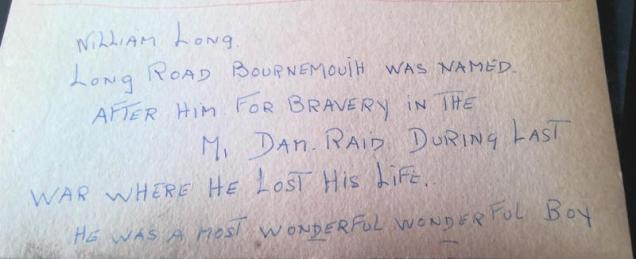

William Wallis is a great nephew of Barnes Wallis, and was 16 when he died in 1979. He attended both his funeral in his local church and the later memorial service, which was held in St Paul’s Cathedral. William has kindly sent me photographs of the orders of service for these events and he also has an LP record of the memorial service, the cover of which is shown above.
In an email, he described the St Paul’s event: “I was 16 at the time of the service and my recollections of such an auspicious occasion were tempered by my age. I recall being very annoyed at having to wear my school uniform and that I sat behind Prince Charles, finding his growing bald spot very amusing.”
The front covers for both services are shown below:


William Wallis is the grandson of Barnes Wallis’s brother, Lt Col Charles Robinson Ashby Wallis, who served in the First World War in the artillery (being gassed at both Passchendaele and Ypres) and later the Royal Air Corps. William’s father, Charles David Ashby Wallis, was the oldest of his children and died in 2018 aged 92.
The two Wallis brothers spent many happy holidays in Dorset with their families, as
this 2008 article in Dorset Life written by their children, first cousins Charles D A Wallis and Mary Stopes Roe recalls. As the article says:
“… both brothers had a love for the Dorset countryside; so after the war, when Barnes and family took their summer holiday in Dorset, the two families would get together. Barnes rented a field between Corfe and Swanage under Nine Barrow Down as a camping site. …
He took pleasure in keeping the camp trim and well-ordered, and in making sure that the younger ones knew how to pitch tents, deal with sanitary matters, see to guy ropes and take weather precautions. The sound of his Wellington boots clumping round the tents on wet and windy nights as he checked the ropes was unforgettably comforting. He took part in the daily chores, joking, singing and inventing games. When he washed up, plates would be tossed to the person drying up, and from him or her to the person stacking away. The larder cabinet was strung up on a tree trunk, and a barrel of cider (‘It’s cheaper by the barrel!’) carefully raised to allow for easy pouring.”
In retirement, Charles R A Wallis dedicated himself to his local community of Gillingham in Dorset and its church which he was instrumental in refurbishing. As a keen historian he started a local museum which is still open today as part of the Gillingham museum. Sadly, in 1962 he drowned while staying in Cornwall, trying to save a swimmer in trouble. He dived in to the sea and although himself a fit man who was a strong swimmer both he and the other swimmer lost their lives. He was posthumously recognised with the highest award for bravery by the Royal Humane Society.

Charles R A Wallis, as a young army officer, photographed in 1916. [Pic: Wallis family]
Despite this tragedy, Barnes and Molly Wallis stayed close to his brother’s family, and their four great nephews were frequent visitors to their house in Effingham.

Barnes and Molly Wallis, photographed at their house in Effingham in the 1970s with their great nephews. From left, Matthew, William, Robert and Andrew Wallis. [Pic: Wallis family]






